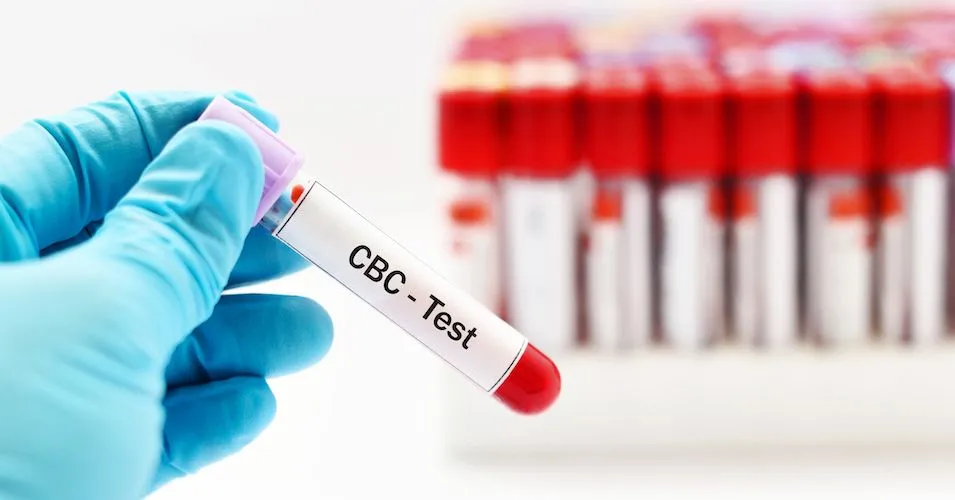Medicare Prescription Drug Cost Changes for 2024 and 2025

It’s no secret that in the United States, a cancer diagnosis can translate into a significant financial burden for the patient and their family. Thankfully, action is being taken in the national legislature to decrease spending for Americans on Medicare.
Many Americans add Medicare Part D to their standard Medicare Plan to cover prescription drug costs. Today, we will discuss the 2024/2025 Medicare Part D updates and how they can benefit blood cancer patients on Medicare.
Review of Medicare Part D Stages and 2023 Medicare Part D Changes
Thanks to the Inflation Reduction Act of 2022, significant changes to Medicare went into effect, including coverage updates to Medicare Part D.
There are 4 parts to the Medicare Part D coverage in which drug costs are covered at varying levels by the enrollees themselves, drug manufacturers, Part D plans, and Medicare itself.
Beginning in 2023, Part D Enrollees paid $505 for their deductible and 25% of total drug costs, up to the “Catastrophic Threshold”.
You can see the four stages and the state of each phase in 2023 below.
To understand the catastrophic phase, those enrolled in Part D reach the catastrophic threshold when their out-of-pocket amount, plus the value of the manufacturer discount on the price of brand-name drugs in the coverage gap stage, exceeds a certain dollar amount.
This amount has changed historically, and further changes will be made in 2024/2025.
In 2023, after enrollees reached the catastrophic threshold, the enrollees paid 5% coinsurance of their prescriptions.
2024 Changes to Medicare Part D Coverage
This year, changes to Medicare Part D coverage include eliminating the 5% coinsurance that enrollees had to take on after they had reached the catastrophic threshold in 2023.
Instead, they will have a spending cap and not have to contribute anymore after reaching the catastrophic threshold of $8,000 (in 2024). With the value of the manufacturer price discount on brands factored in, this means that enrollee out-of-pocket costs would sit around $3,300.
This will save thousands of dollars for blood cancer patients, who often pay exuberant out-of-pocket costs for treatments such as Revlimid (BMS, Celgene), Pomalyst (BMS), Imbruvica (AbbVie, Janssen Biotech), or Jakafi (Novartis).
The table below, provided by KFF, the independent source for health policy research, polling, and news, shows the extreme savings this could give to patients paying for high-cost drugs/treatments.
Other updates this year include an increase in Part D Plan contributions. Previously, they covered 15% of total drug costs in the catastrophic stage, but they will now cover 20%.
2025 Changes to Medicare Part D Coverage
There are more changes to come in 2025 to Medicare Part D plans and coverage including:
- A $2000 out-of-pocket maximum for enrollees
- Getting rid of the coverage gap phase
- A higher share of drug costs paid by the Part D plan in the catastrophic phase
- New manufacturer price discount in the catastrophic phase
- Changes to plan costs and manufacturer price discount in the initial coverage stage (after deductible)
Because of the new $2000 out-of-pocket maximum, for a cancer patient usually paying around $3300 (as mentioned in the last section), this provides annual savings of at least $1300.
As you might remember from above, the coverage gap stage was previously between the initial coverage stage (after the deductible) and before the catastrophic stage. Below is the image for reference again.
In 2025, the coverage gap stage will no longer exist. This means that Part D enrollees will no longer be responsible for the cost of a given drug after they move from the initial coverage stage to the coverage gap stage. Interestingly enough, this is actually what occurs within most Part D plans today, but it’s nice to have it in writing.
Other plan changes in 2025 include Part D plans and drug manufacturers paying a larger amount of costs for catastrophic coverage, with Medicare paying a smaller share.
Action Steps
Medicare can be frustrating and confusing. Our coaching program offers free 1:1 help from a financial coach.
- Are you a myeloma patient? Sign up for a free account and filter for “Health Insurance/Financial Resources”
- If you or a loved one has a different blood cancer, email Diahanna Vallentine to receive help.
Conclusion
In conclusion, the upcoming changes to Medicare Part D in 2024 and 2025 offer significant financial relief for blood cancer patients and other Medicare beneficiaries. Eliminating the 5% coinsurance, introducing a spending cap, and removing the coverage gap represent monumental steps toward reducing the financial burden of prescription drugs.
With these reforms, patients will have more predictable and manageable out-of-pocket costs, allowing them to focus on their health rather than the high cost of treatment. As these changes take effect, they mark a crucial turning point in making life-saving medications more accessible and affordable for those who need them most.
Sources:
Thank you to KFF for their excellent coverage of this topic and the excellent graphics throughout this article.
It’s no secret that in the United States, a cancer diagnosis can translate into a significant financial burden for the patient and their family. Thankfully, action is being taken in the national legislature to decrease spending for Americans on Medicare.
Many Americans add Medicare Part D to their standard Medicare Plan to cover prescription drug costs. Today, we will discuss the 2024/2025 Medicare Part D updates and how they can benefit blood cancer patients on Medicare.
Review of Medicare Part D Stages and 2023 Medicare Part D Changes
Thanks to the Inflation Reduction Act of 2022, significant changes to Medicare went into effect, including coverage updates to Medicare Part D.
There are 4 parts to the Medicare Part D coverage in which drug costs are covered at varying levels by the enrollees themselves, drug manufacturers, Part D plans, and Medicare itself.
Beginning in 2023, Part D Enrollees paid $505 for their deductible and 25% of total drug costs, up to the “Catastrophic Threshold”.
You can see the four stages and the state of each phase in 2023 below.
To understand the catastrophic phase, those enrolled in Part D reach the catastrophic threshold when their out-of-pocket amount, plus the value of the manufacturer discount on the price of brand-name drugs in the coverage gap stage, exceeds a certain dollar amount.
This amount has changed historically, and further changes will be made in 2024/2025.
In 2023, after enrollees reached the catastrophic threshold, the enrollees paid 5% coinsurance of their prescriptions.
2024 Changes to Medicare Part D Coverage
This year, changes to Medicare Part D coverage include eliminating the 5% coinsurance that enrollees had to take on after they had reached the catastrophic threshold in 2023.
Instead, they will have a spending cap and not have to contribute anymore after reaching the catastrophic threshold of $8,000 (in 2024). With the value of the manufacturer price discount on brands factored in, this means that enrollee out-of-pocket costs would sit around $3,300.
This will save thousands of dollars for blood cancer patients, who often pay exuberant out-of-pocket costs for treatments such as Revlimid (BMS, Celgene), Pomalyst (BMS), Imbruvica (AbbVie, Janssen Biotech), or Jakafi (Novartis).
The table below, provided by KFF, the independent source for health policy research, polling, and news, shows the extreme savings this could give to patients paying for high-cost drugs/treatments.
Other updates this year include an increase in Part D Plan contributions. Previously, they covered 15% of total drug costs in the catastrophic stage, but they will now cover 20%.
2025 Changes to Medicare Part D Coverage
There are more changes to come in 2025 to Medicare Part D plans and coverage including:
- A $2000 out-of-pocket maximum for enrollees
- Getting rid of the coverage gap phase
- A higher share of drug costs paid by the Part D plan in the catastrophic phase
- New manufacturer price discount in the catastrophic phase
- Changes to plan costs and manufacturer price discount in the initial coverage stage (after deductible)
Because of the new $2000 out-of-pocket maximum, for a cancer patient usually paying around $3300 (as mentioned in the last section), this provides annual savings of at least $1300.
As you might remember from above, the coverage gap stage was previously between the initial coverage stage (after the deductible) and before the catastrophic stage. Below is the image for reference again.
In 2025, the coverage gap stage will no longer exist. This means that Part D enrollees will no longer be responsible for the cost of a given drug after they move from the initial coverage stage to the coverage gap stage. Interestingly enough, this is actually what occurs within most Part D plans today, but it’s nice to have it in writing.
Other plan changes in 2025 include Part D plans and drug manufacturers paying a larger amount of costs for catastrophic coverage, with Medicare paying a smaller share.
Action Steps
Medicare can be frustrating and confusing. Our coaching program offers free 1:1 help from a financial coach.
- Are you a myeloma patient? Sign up for a free account and filter for “Health Insurance/Financial Resources”
- If you or a loved one has a different blood cancer, email Diahanna Vallentine to receive help.
Conclusion
In conclusion, the upcoming changes to Medicare Part D in 2024 and 2025 offer significant financial relief for blood cancer patients and other Medicare beneficiaries. Eliminating the 5% coinsurance, introducing a spending cap, and removing the coverage gap represent monumental steps toward reducing the financial burden of prescription drugs.
With these reforms, patients will have more predictable and manageable out-of-pocket costs, allowing them to focus on their health rather than the high cost of treatment. As these changes take effect, they mark a crucial turning point in making life-saving medications more accessible and affordable for those who need them most.
Sources:
Thank you to KFF for their excellent coverage of this topic and the excellent graphics throughout this article.

about the author
Audrey Burton-Bethke
Audrey is a content writer and editor for the HealthTree Foundation. She originally joined the HealthTree Foundation in 2020. Audrey loves spending time with her supportive husband, energetic four-year-old, and new baby.
More on Navigating Your Health
Trending Articles
Stay Informed. Get the Support You Need for Chronic Lymphocytic Leukemia.
By subscribing to the Healthtree newsletter, you'll receive the latest research, treatment updates, and expert insights to help you navigate your health.












